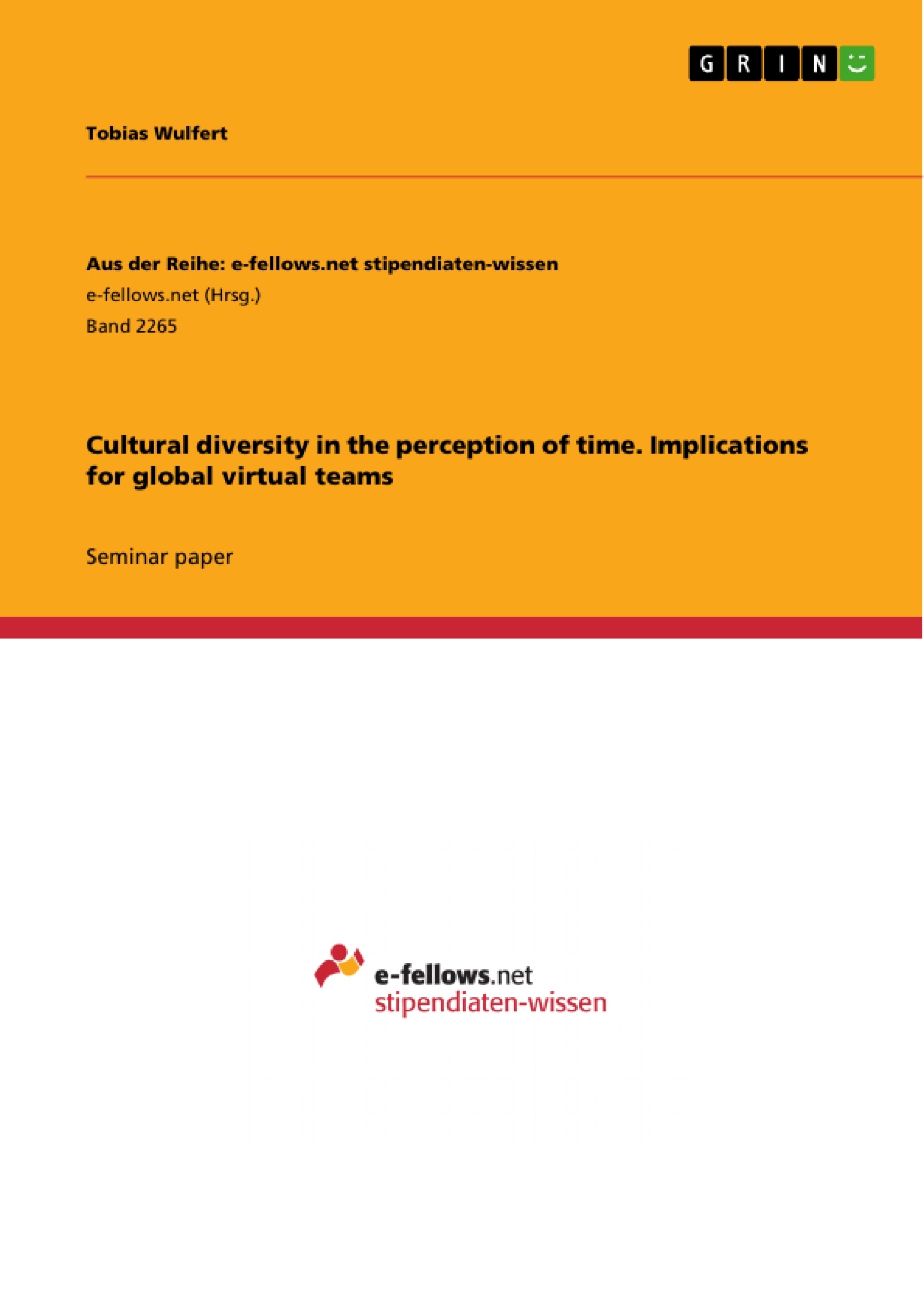This thesis aims at identifying dimensions in the individual’s perception of time that are influenced by some dimensions of national cultures. Further, implications of cultural differences in these time perception dimensions for GVTs and the temporal coordination in GVTs should be identified. Additionally, the influence of ICT on the internal team processes and the team members’ surrounding environment is assessed. Therefore, the current state of the literature with regards to GVTs, its relevance and problems as well as with regards to temporal coordination is reviewed. Moreover, time perception dimensions are discovered in the actual research, combined with existing cultural dimensions and applied on GVTs.
The continuous progress in the development of modern information and communication technology (ICT) and the need for flexible responses to globalized markets trigger companies to frequently build global virtual teams (GVT). Most of the teams that are assembled in companies work at least to some extend virtually. The team members of a GVT are geographically and timely dispersed and collaborate through the use of ICT. Compared to face-to-face teams, these GVTs face several additional challenges, some of which are caused by the cultural diversity of GVTs and the associated differences in the perception of time. Although much effort was spent in the past to synchronize the clock time and calendars globally, the meaning of time is perceived differently across national cultures.
Inhaltsverzeichnis (Table of Contents)
- Introduction
- Challenges of diversity for global virtual teams
- Relevance for today's organizations
- Diversity expressed with national cultures
- Dimensions of virtual collaboration
- Virtual gap and virtual edge
- The need for temporal coordination for effective teamwork
- Cultural diversity in the perception of time
- Time perception as cultural core value
- Being on time: meaning across cultures
- Structure of time: monochronic and polychronic time
- Time orientation: past, present and future
- The role of technology in global virtual teams
- Importance of information and communication technology selection
- Integration and isolation through technology
- Coordination and pace making through technology
- Discussion
- Summary
Zielsetzung und Themenschwerpunkte (Objectives and Key Themes)
This thesis aims to explore the impact of cultural diversity on the perception of time in global virtual teams (GVTs). The study will investigate how different national cultures influence individual time perception dimensions and how these differences affect temporal coordination within GVTs. Furthermore, the thesis will assess the role of information and communication technology (ICT) in facilitating communication and coordination within GVTs. The research will delve into the challenges and opportunities associated with managing GVTs in a globalized environment.
- Cultural diversity in the perception of time
- Temporal coordination in global virtual teams
- Impact of ICT on global virtual team dynamics
- Challenges and opportunities of managing global virtual teams
- The role of national culture in shaping time perception
Zusammenfassung der Kapitel (Chapter Summaries)
The first chapter provides an overview of the growing significance of global virtual teams (GVTs) in today's organizations. It highlights the advantages of GVTs, including increased flexibility, access to global expertise, and cost savings. However, the chapter also acknowledges the challenges associated with managing GVTs, particularly those stemming from cultural diversity and differences in time perception. Chapter two examines the impact of cultural diversity on GVTs, exploring the relevance of national cultural dimensions for understanding differences in time perception. Chapter three delves into the importance of temporal coordination for effective teamwork, highlighting the need for strategies to overcome challenges arising from diverse time perceptions. Chapter four explores different dimensions of time perception, analyzing how cultural values and norms influence the way individuals perceive and manage time. Chapter five investigates the role of technology in GVTs, focusing on the impact of information and communication technology (ICT) on team processes and coordination.
Schlüsselwörter (Keywords)
The primary focus of this thesis lies on the interplay of cultural diversity, time perception, and global virtual team (GVT) dynamics. Key themes include: cultural dimensions, time perception, temporal coordination, information and communication technology (ICT), virtual collaboration, globalization, and organizational challenges.
- Quote paper
- Tobias Wulfert (Author), 2016, Cultural diversity in the perception of time. Implications for global virtual teams, Munich, GRIN Verlag, https://www.grin.com/document/353590



